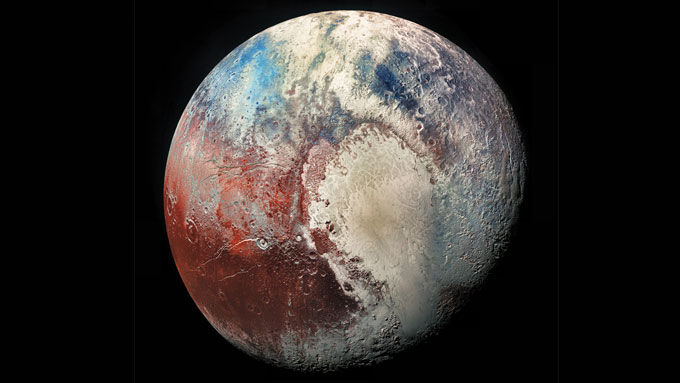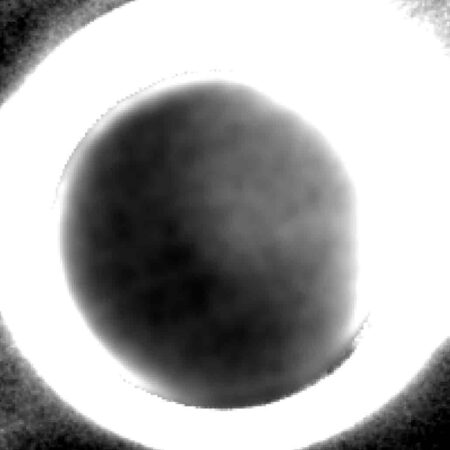This post was originally published on this site
Pluto’s dark side has come into dim view, thanks to the light of the dwarf planet’s moon.
When NASA’s New Horizons spacecraft flew past Pluto in 2015, almost all the images of the dwarf planet’s unexpectedly complex surface were of the side illuminated by the sun (SN: 7/15/15). Darkness shrouded the dwarf planet’s other hemisphere. Some of it, like the area near the south pole, hadn’t seen the sun for decades.
Now, mission scientists have finally released a grainy view of the dwarf planet’s dark side. The researchers describe the process to take the photo and what it tells them about how Pluto’s nitrogen cycle affects its atmosphere October 20 in the Planetary Science Journal.
Before New Horizons passed by Pluto, the team suspected the dwarf planet’s largest moon, Charon, might reflect enough light to illuminate the distant world’s surface. So the researchers had the spacecraft turn back toward the sun to take a parting peek at Pluto.

At first, the images just showed a ring of sunlight filtering through Pluto’s hazy atmosphere (SN: 7/24/15). “It’s very hard to see anything in that glare,” says planetary scientist John Spencer of the Southwest Research Institute in Boulder, Colo. “It’s like trying to read a street sign when you’re driving toward the setting sun and you have a dirty windshield.”
Spencer and colleagues took a few steps to make it possible to pull details of Pluto’s dark side out of the glare. First, the team had the spacecraft take 360 short snapshots of the backlit dwarf planet. Each was about 0.4 seconds long, to avoid overexposing the images. The team also took snapshots of the sun without Pluto in the frame so that the sun could be subtracted out after the fact.
Tod Lauer of the National Optical Astronomy Observatory in Tucson, Ariz., tried to process the images when he got the data in 2016. At the time, the rest of the data from New Horizons was still fresh and took up most of his attention, so he didn’t have the time to tackle such a tricky project.
But “it was something that just sat there and ate away at me,” Lauer says. He tried again in 2019. Because the spacecraft was moving as it took the images, each image was a little bit smeared or blurred. Lauer wrote a computer code to remove that blur from each individual frame. Then he added the reflected Charon light in each of those hundreds of images together to produce a single image.
“When Tod did that painstaking analysis, we finally saw something emerging in the dark there … giving us a little bit of a glimpse of what the dark pole of Pluto looks like,” Spencer says.
That the team got anything at all is impressive, says planetary scientist Carly Howett, also of the Southwest Research Institute and who is on the New Horizons team but was not involved in this work. “This dataset is really, really hard to work with,” she says. “Kudos to this team. I wouldn’t have wanted to do this.”
The image, Howett says, can help scientists understand how Pluto’s frigid nitrogen atmosphere varies with its decades-long seasons. Pluto’s atmosphere is controlled by how much nitrogen is in a gas phase in the air and how much is frozen on the surface. The more nitrogen ice that evaporates, the thicker the atmosphere becomes. If too much nitrogen freezes to the ground, the atmosphere could collapse altogether.

When New Horizons was there, Pluto’s south pole looked darker than the north pole. That suggests there was not a lot of fresh nitrogen frost freezing out of the atmosphere there, even though it was nearing winter. “The previous summer ended decades ago, but Pluto cools off pretty slowly,” Spencer says. “Maybe it’s still so warm [that] the frost can’t condense there, and that keeps the atmosphere from collapsing.”
There was a bright spot in the middle of the image, which could be a fresh ice deposit. That’s also not surprising, Howett says. The ices may still be moving from the north pole to the south pole as Pluto moves deeper into its wintertime.
“We’ve thought this for a long time. It makes sense,” she says. “But it’s nice to see it happening.”
